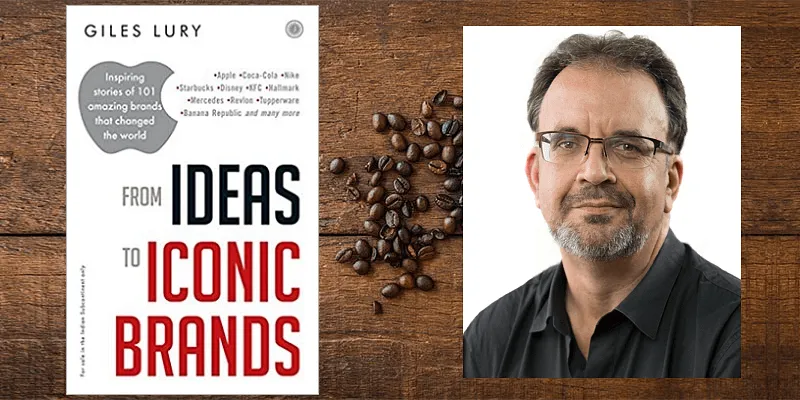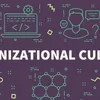Stall, boom, pivot: how coronavirus is throwing up challenges and opportunities for business
In this interview, bestselling author Giles Lury shares advice on how brands need to transform their messaging, alliances, and social responsibility in the time of coronavirus.
Giles Lury is director of brand consultancy, The Value Engineers, and author of From Ideas to Iconic Brands (see my book review here). He has written six other books, including Iconic Innovations, Adwatching, and The Prisoner and the Penguin.

In a chat with YourStory, Giles talks about innovation in times of crisis, examples of digital transformation, and the importance of employee connection.
Edited excerpts from Part I of the interview:
YourStory (YS): What kinds of challenges does the coronavirus outbreak throw up for brands?
Giles Lury (GL): This is a big question as it affects different brands in many different ways. But if I were to try and categorise the challenges into only a few, I would highlight three clusters: stall, boom and pivot.
Brands whose business literally falls off the cliff – one day they had it, the next day it stopped.
Brands whose business booms – which for some is great news. For example, Disney+ in the UK reached 50 million subscribers in the first five months (half of their five-year target). But for others, the boom may seem like wonderful news but can bring enormous logistical challenges.
Home delivery services have been struggling, their websites have crashed; they haven’t been able to scale up quick enough. For example, take flour brands in the UK. There has been a huge increase in demand for flour for home baking – but 90 percent of normal production goes to big manufacturers and bakers that supply supermarkets.
But the millers just can’t change into producing enough in small bags. So the flour brands can’t take full advantage of the uplift in demand.
Brands who have to pivot their focus - these include restaurants, coffee shops, and their suppliers. They are moving into home delivery.
YS: At the same time, how does the crisis open up opportunities for brands?
GL: The opportunities for brands and marketing teams are also numerous. Some brands, which are in a ‘holding pattern’, need to start thinking about how they regain business and what the new needs of post-COVID crisis customers will be in what is likely to be a deep recession.
Other brands need to think about how they pivot their focus and take opportunities. For example, Dyson’s production of a ventilator (the CoVent) could herald a bigger move into healthcare and medtech.
Some who have benefited need to consider how they try and maintain their relevance and appeal post the crisis – the gaming industry being a prime example. They have seen lapsed and non-users now gaming, as well as current users increasing usage. They will probably need different strategies for the different groups to try and hang onto the gains they have seen.
In keeping with my love of stories, I am currently writing and publishing some tales of how brands responded to past crises – such as Revlon, Fanta, and the Mini. They range from innovation and pivoting to focusing on particular sectors. I post these on my website and repost them on LinkedIn.
YS: How was your book received? What kinds of reactions/responses did you get?
GL: The book has been received very well. My deliberate choice of including lots of short stories is clearly something that most people enjoy. It means they can pick up the book read a couple, put it down and come back to it later.
Occasionally, they say it might be good to have a bit more depth, but even then most qualify it by going on to say that this is more than made up for by the breadth. I get quite a few compliments on the style, which people say is accessible and refreshingly light-hearted.
YS: What are the ways in which brands need to show responsibility during times of crisis?
GL: There have been surveys that show that brands are increasingly expected to step up and do something to help. One survey showed that 50 percent of US consumers expect brands to step up their game. Around 98 percent of Americans expect brands to take some form of action during the pandemic.
What has been great is that there is an ever-increasing number of heartwarming stories about brands who are doing their bit.
Dyson and Mercedes are developing ventilators, while Zara, Barbour and Burberry are making PPE (personal protective equipment). Then there is the amazing story of how LVMH went from starting work on a hand sanitiser to making the first deliveries in just 72 hours.
Other brands are offering healthcare professionals their services free or at cut-price. There has been an explosion in free tutorials, courses, guided tours, and online shows. I have just started one of the courses being offered by Harvard.
YS: How should brand messaging and marketing be changing in these times of coronavirus?
GL: This can be answered on many levels. Firstly, I think brands talking to their own employees will never have been more important. Interestingly, there is some evidence that the wider public see brands looking after their staff as a key requirement and something they applaud and value.
Secondly, while I understand that brands want to keep in touch, the numerous emails I have received from brands’ CEOs wanting to tell me they are thinking of me seems like a waste of time. But this can be useful and valuable when it’s an explanation of why they have suspended their services and what parts of the business are still open.
The third area where brands need to think about messaging is more general communication, as past evidence shows that brands that continue to advertise have better post crisis performance. The question is: what they should communicate?
Here, I think there are two routes. The more caring, concerned approach would be something like ‘We are in this together but we can come through it’, which can be heart-warming or cringe-worthy.
The second approach is a more light-hearted approach. It has the potential for more cut-through if, and it’s a big if, you get the tone right.
Government communication is also interesting, and my belief is that the UK government got it wrong at the early stages of the crisis but has improved since. From the early stages it was apparent that the age group that were most at risk from COVID-19 were the over-70s and it was one of the most consistent messages the UK government tried to communicate.
What they didn’t realise was that not all over-70s are the same and many don’t feel old and certainly don’t like being told they’re old! The shift to focussing on “Stay home, protect the NHS and save lives” is a much more powerful piece of communication.
This messaging is not age-led, it is more emotionally-led and taps into a very widespread emotional bond the UK has with the ‘national treasure’ that is the NHS.
YS: What new partnerships should brands be exploring, eg with government, Netflix, ecommerce, wellness providers?
GL: This will vary by what market you’re in but the growing role of digital/online/social media/working from home suggests better partnerships with major players in those arenas are going to be key.
There are already some interesting partnerships evolving, currently more focused on helping out with the crisis. For example, the Gates Foundation is partnering with Amazon to get home testing kits out to Americans.
Dyson, in its drive to quickly develop a ventilator, teamed up with The Technology Partnership (TTP), an independent company where scientists and engineers collaborate. The aim is to invent, design and develop new products and technologies.
YS: When public fear and panic are on the rise, how should brands tackle such emotions and instil calm?
GL: Whether brands can do this better than governments, the UN, and other bodies is an interesting debating point! But I do think now is the time for brands to honour their values and their commitment, to demonstrate that they can be trusted and to repeat something.
I said earlier that brands should be truthful, explain what they are doing and why, and try to set out any timelines they can. This hopefully would help in troubled and troubling times.
YS: How should brands be creating additional relevant content during these times of crisis?
GL: They can do this in a number of ways. If you can’t go to the show, can you see the show online? If you can’t go the hairdresser’s, can you have a home tutorial on cutting or colouring your hair? If you can’t go to the gym, can you find an online instructor?
This is something that many brands can and are doing at the moment – replacing real-world activities with relevant practical content. For example, I had been planning to go and see an exhibition at The Tate Museum about Aubrey Beardsley, but have enjoyed the film and detailed notes they provided. I would also add the “One world, Together at home” concert, which was a wonderful digital translation of Band-Aid.
YS: How should brands and advertisers respond to the tough issues of cost-cutting and layoffs that mainstream media is going through?
GL: ‘Tough’ probably isn’t a strong enough word – it’s going to be heart-rending for millions of people and thousands and thousands of businesses and brands.
I think the two things I might suggest here is that I think honesty will be the best policy – explaining to people what’s happening and why it’s happening. That is, at minimum, what people deserve, and they should be informed as things change for the better or worse.
Secondly – and perhaps strangely – I think it will need us all to reflect on what we expect from business, they can’t just go on giving things away because they would go out of business and there will be even more job losses. For me, it will be about rebalancing brands’ purposes.
In recent years, there has been a rush to focus on how brands can benefit wider society almost to the exclusion of anything else. But successful brands need to provide the jobs and growth; the tax on their profits will help governments pay off the debts and hopefully rebuild pensions.
Brands will need to think about a triple win – being good for business, good for people (customers), and good for society and the environment.
Edited by Teja Lele










